Posted by on
21/10/2025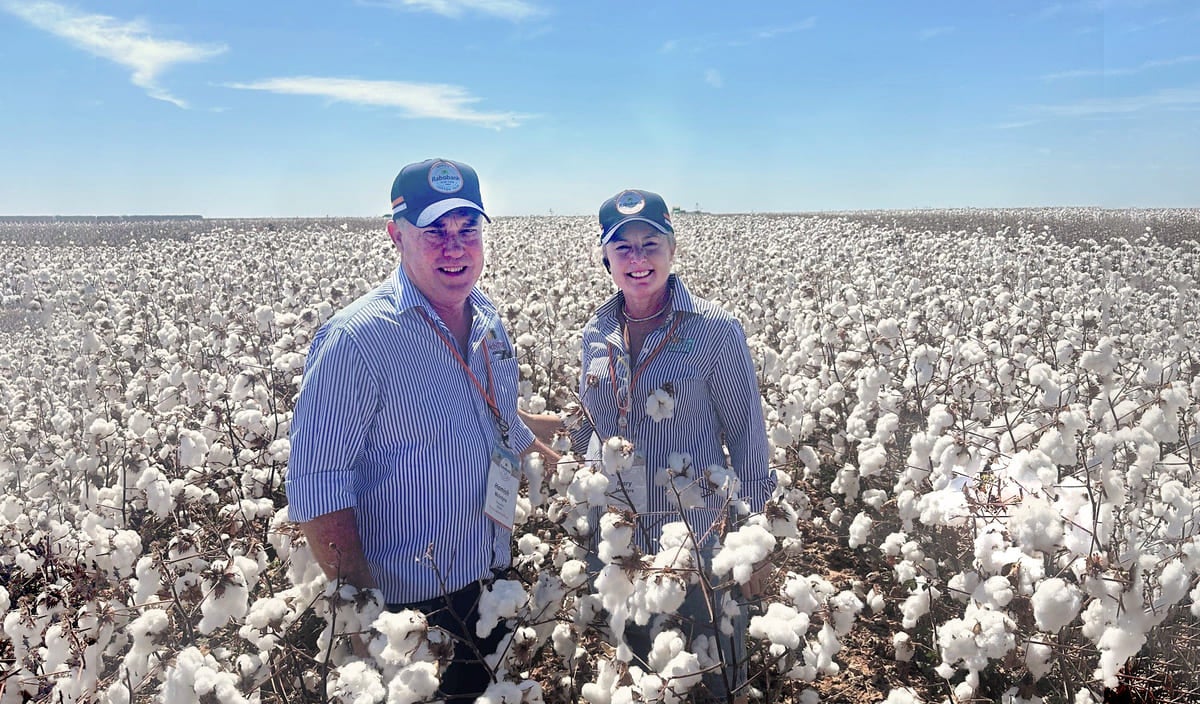
Hamish and Mary McIntyre on the recent Rabobank Knowledge Tour to Brazil
When it comes to operating a multi-faceted agricultural business, Queensland cotton, cattle and cereal producers Hamish and Mary McIntyre appreciate the efficiency and returns economies of scale afford.
Yet, this dynamic couple admit they were “blown away” by the extent of Brazil’s cotton industry, with Rabobank’s recent knowledge tour a revelation – providing insights relevant to their own operation, and the wider Australian industry.
First-hand insights from the ground up
Hamish describes the scale of family-run cotton operations in Brazil as “simply extraordinary”, and likens standing amongst a 113,000 hectare cotton crop in Brazil’s Mato Grosso region to standing in the Northern Territory’s vast Barkly Tableland.
“In the Barkly Tableland you can look at grass for as far as the eye can see, and on these farms you’re looking at cotton – the crop just goes on and on.”.
“The Brazilian industry was established in line with Australia’s during the mid-1980s, and while Australia today produces around five million bales per annum, Brazil produces 16 to 17 million bales, their systems are such that production has tripled.”
With Brazil’s cotton farmers producing seven to eleven bales to the hectare in a rain fed system, he noted growing costs were similar to Australian producers, yet yields were greater and their efficiencies of scale were impressive – with the majority of growers ginning on-farm through their own owner operator gins.
“For reference, we visited four growers who produced 700,000 hectares of cotton between them, and considering their energy and labour costs are well below ours, having on-farm gins makes sense.”
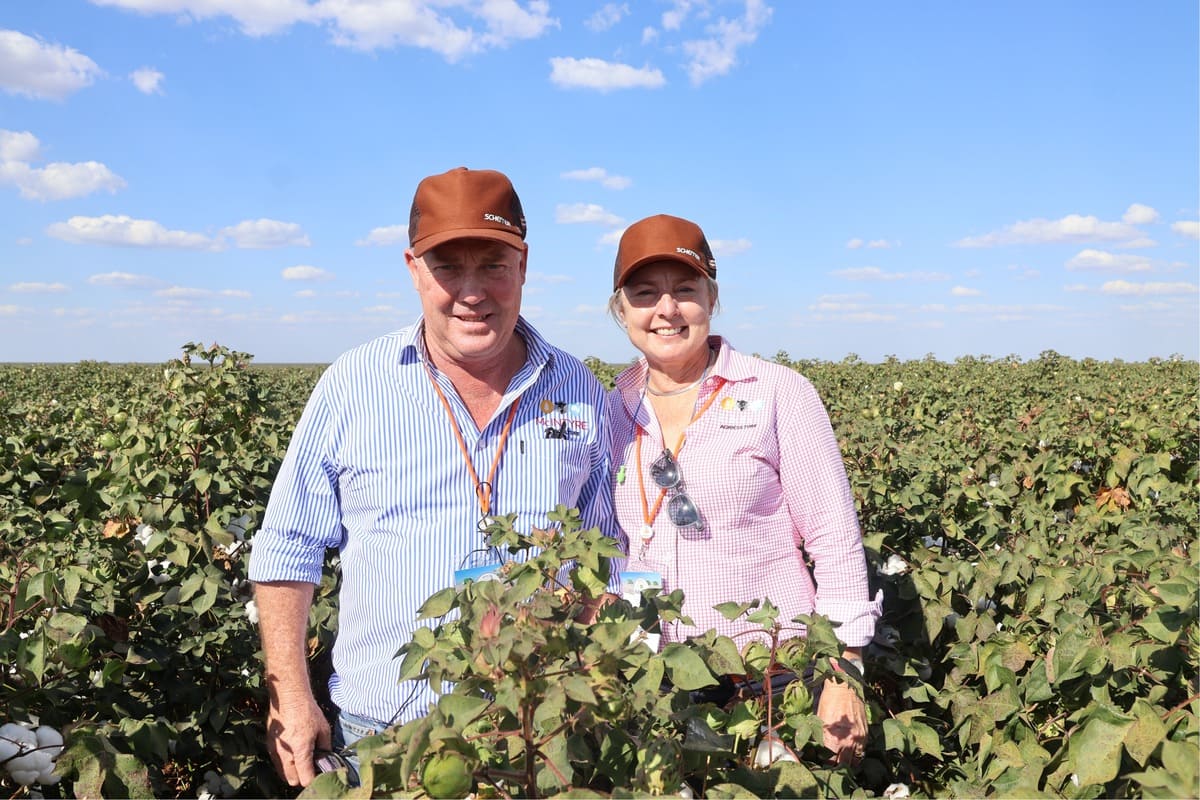
Hamish and Mary on tour in Brazil
The tour also providing fascinating cotton quality comparisons.
“We’d long heard that the quality of Brazilian cotton was behind Australia, but they’re certainly catching up, their staple length was 36nds to our 38, yet beyond that the quality was excellent.”
“Australia can’t compete with the scale of production, so we have to ensure our quality is our competitive advantage, and seeing Brazil’s cotton quality was a real eye-opener.”
“I think Brazil’s industry is ahead of us in a lot of ways, and certainly we were surprised to see so much machinery research and development taking place,“ Hamish reflects. “There were packs of robots spraying green on green in sugarcane crops – innovation we don’t have access to here in Australia.
“It seems Brazil is the country of choice for machinery R&D, whereas it was perhaps once Australia.”
With 31 Australian cotton producers travelling to Brazil for the tour, Hamish and Mary believe the cross section of ages and experience was another trip highlight.
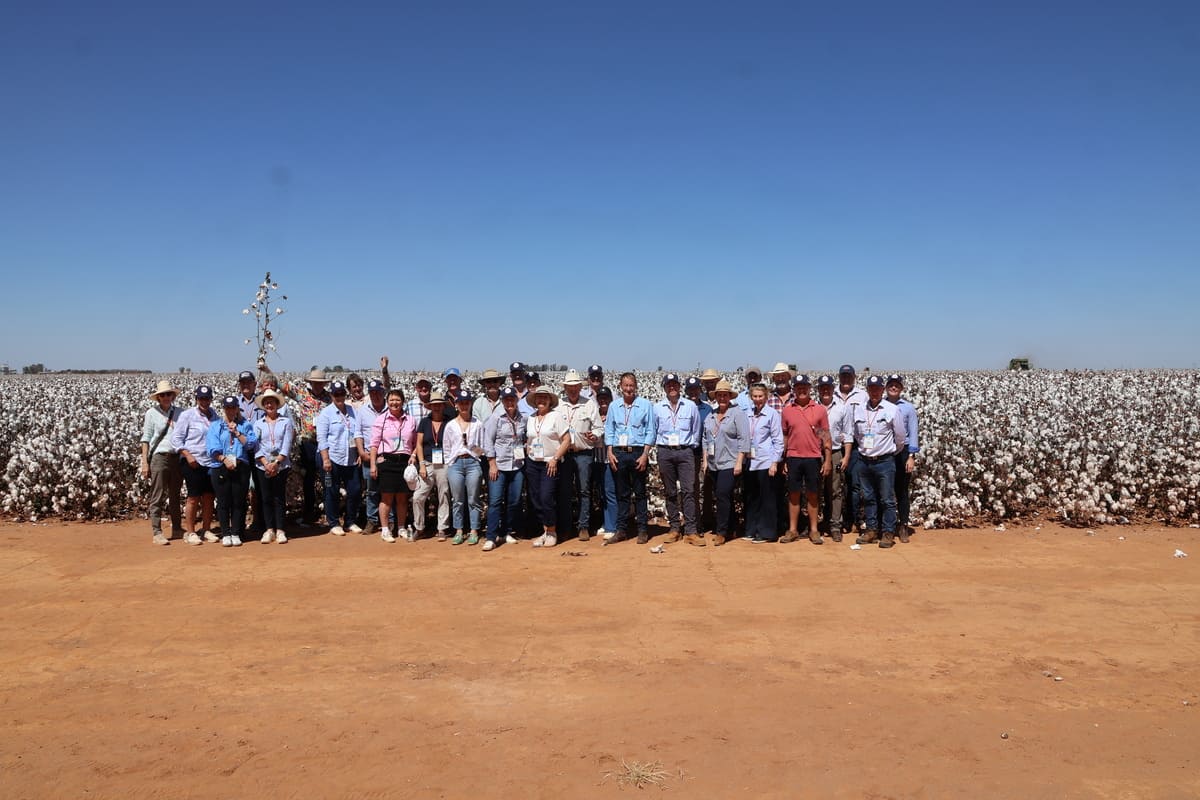
The 2025 Brazil Cotton Tour Cohort
“I gained just as much from the cohort on the tour as I did on-farm, and I think the connections made really underpinned our experience, and is one of the greatest take-aways of the experience,” Hamish says.
Meaningful relationships were also formed with Brazilian cotton growers, with Hamish and Mary already extending reciprocal invitations to visit their Queensland fields.
“The beauty of Rabobank is that it has this unique network of farmers from across the world which they actively and effectively connect.”
“There is just no way we would have access to these extraordinary farmers if we had simply been visiting Brazil as tourists,” Hamish says.
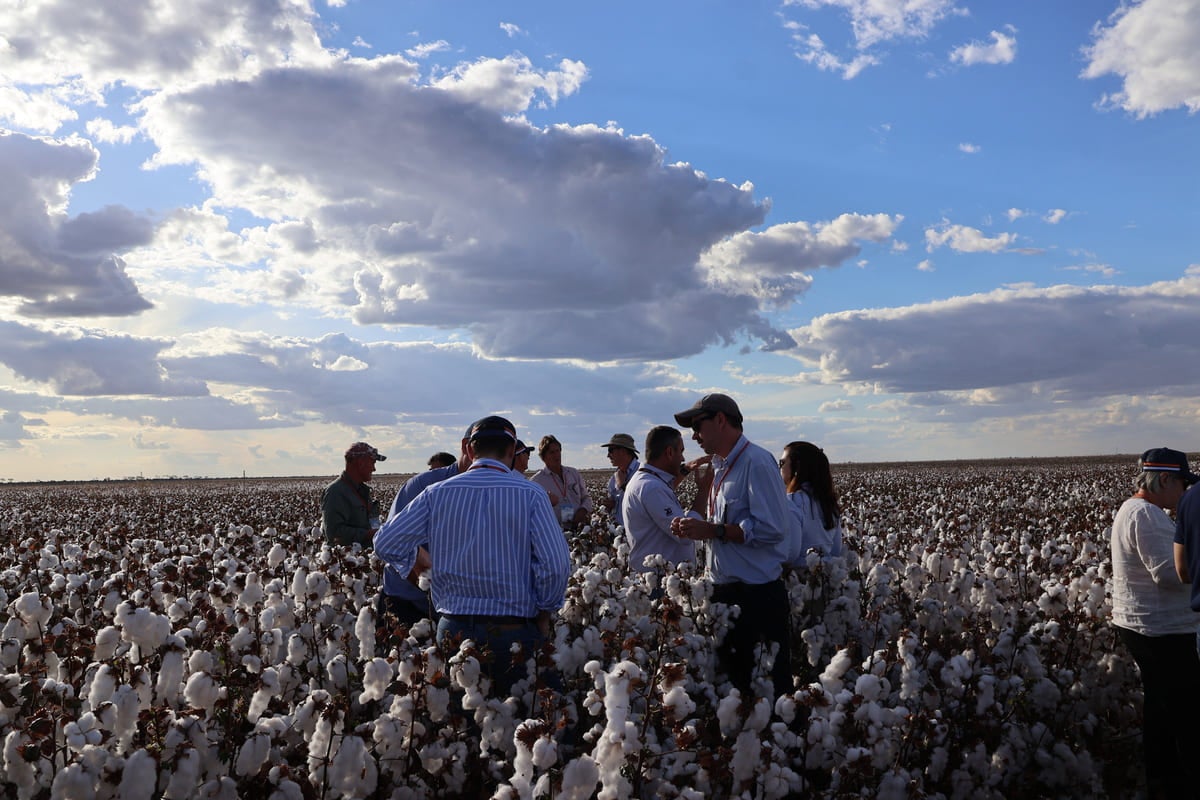
The tour group enjoying some on the ground insights in Brazil.
Applying new knowledge locally
Impressed by the productivity of Brazilian farm systems, Hamish and Mary are now encouraged to apply their learnings across their own operation.
“The Brazilian farming system support two crops, soya beans are planted in August/September, harvested in January, with cotton then planted directly into the soya bean stubble, to be harvested in July/August” Hamish says.
“It’s an amazing system and makes me think perhaps there’s more opportunity for us to push harder double cropping, if it’s agronomically viable.”
“They’re certainly showing us how it’s done,” Hamish smiles.
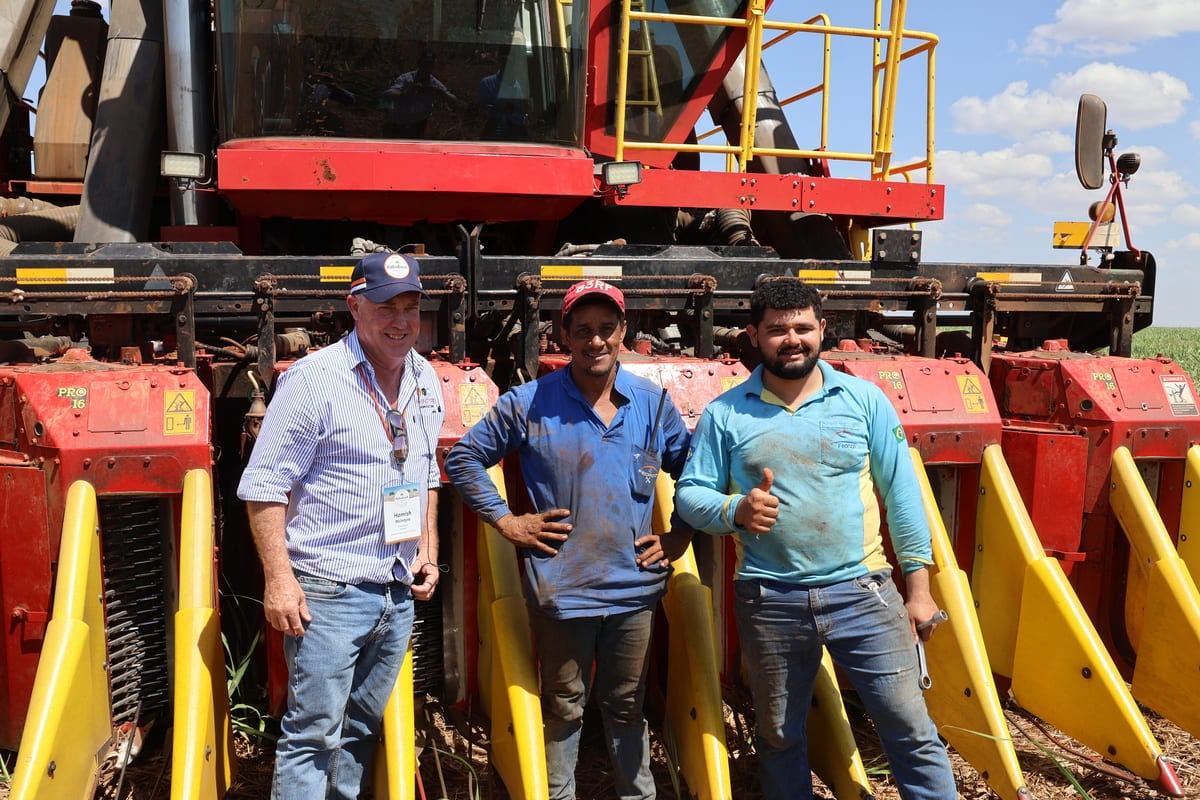
Hamish enjoying a first-hand experience of cotton picking in Brazil
The McIntyres also found Brazil’s progression in the biological space a source of inspiration.
“Brazil is working very hard trying to get every plant to replicate a legume using bio stimulants,” Mary explains.
“It’s the holy grail for all plant scientists, and we didn’t realise how close they are to applying this innovation.”
The cohesive family farming culture was another unique aspect, with Mary explaining that offspring integrate seamlessly with farm employees.
“There’s a very harmonious feel in these farming businesses, with farm children moving away to study, before returning to the business at around the age of 25 – and that includes both sons and daughters equally.”
“When I reflect on Brazil, I think fuel, food, fibre, feed and family – everything is produced in harmony, nothing is wasted, and their systems are a driving force.”
With the McIntyre operation including two feedlots, Mary said the synergies between cattle and cotton in Brazil was of particular interest.
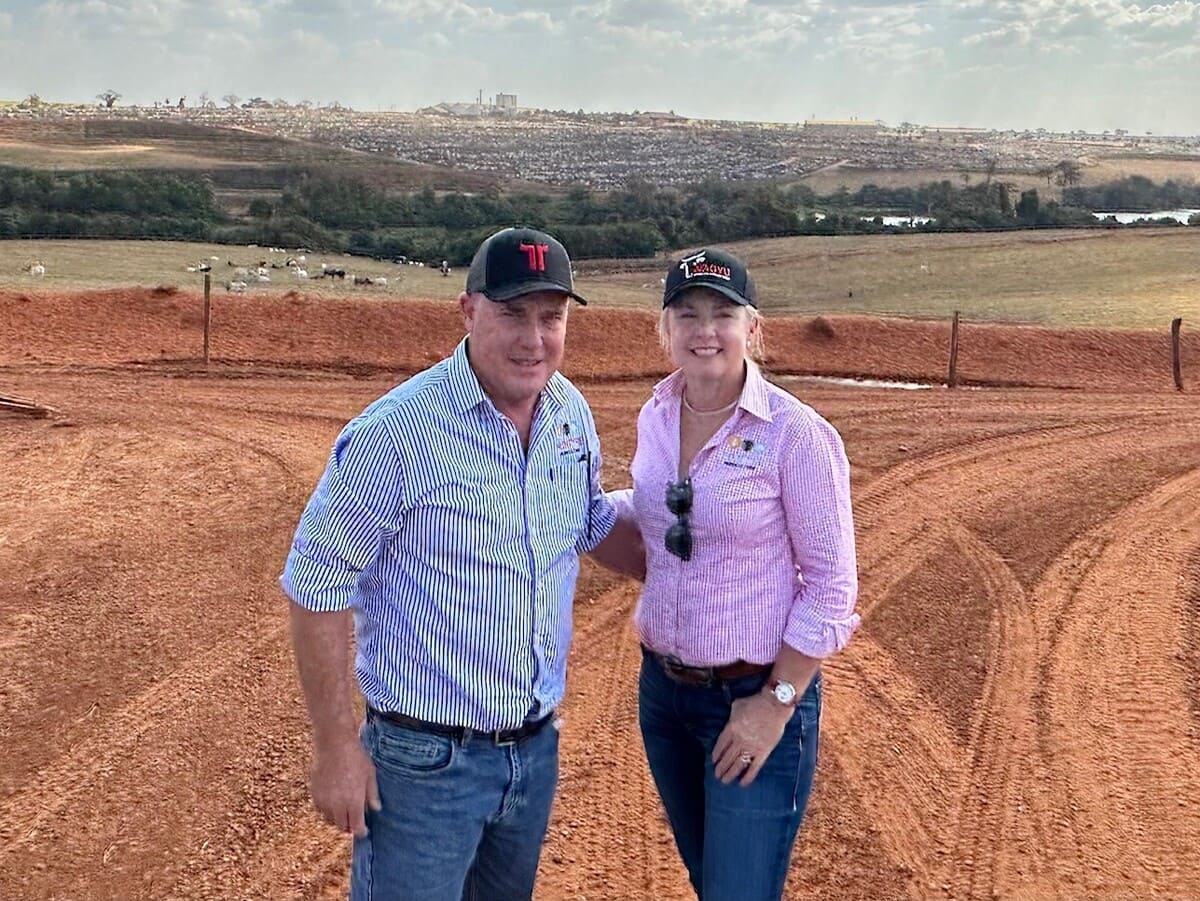
Hamish and Mary had the opportunity to visit a feedlot in Brazil during the tour.
“In Brazil they value add to a greater extent than we do, which provided enormous food for thought,” she explains.
“Every part of the plant is fully utilised – particularly their trash and cotton seed – cotton meal is extracted with cotton oil and trash and made into something similar to a big rice cake, which is then used for cattle feed, it’s a real win/win.”
The couple remains buoyed, however, by Australia’s strong standing when it comes to sustainable cotton production, and believe our integrated pest management techniques are far superior.
“We’re committed to growing crops with minimal pesticides, and we’re excited by the prospect of cotton traceability for genuine accountability, and our Australian growers are certainly leading this movement.”
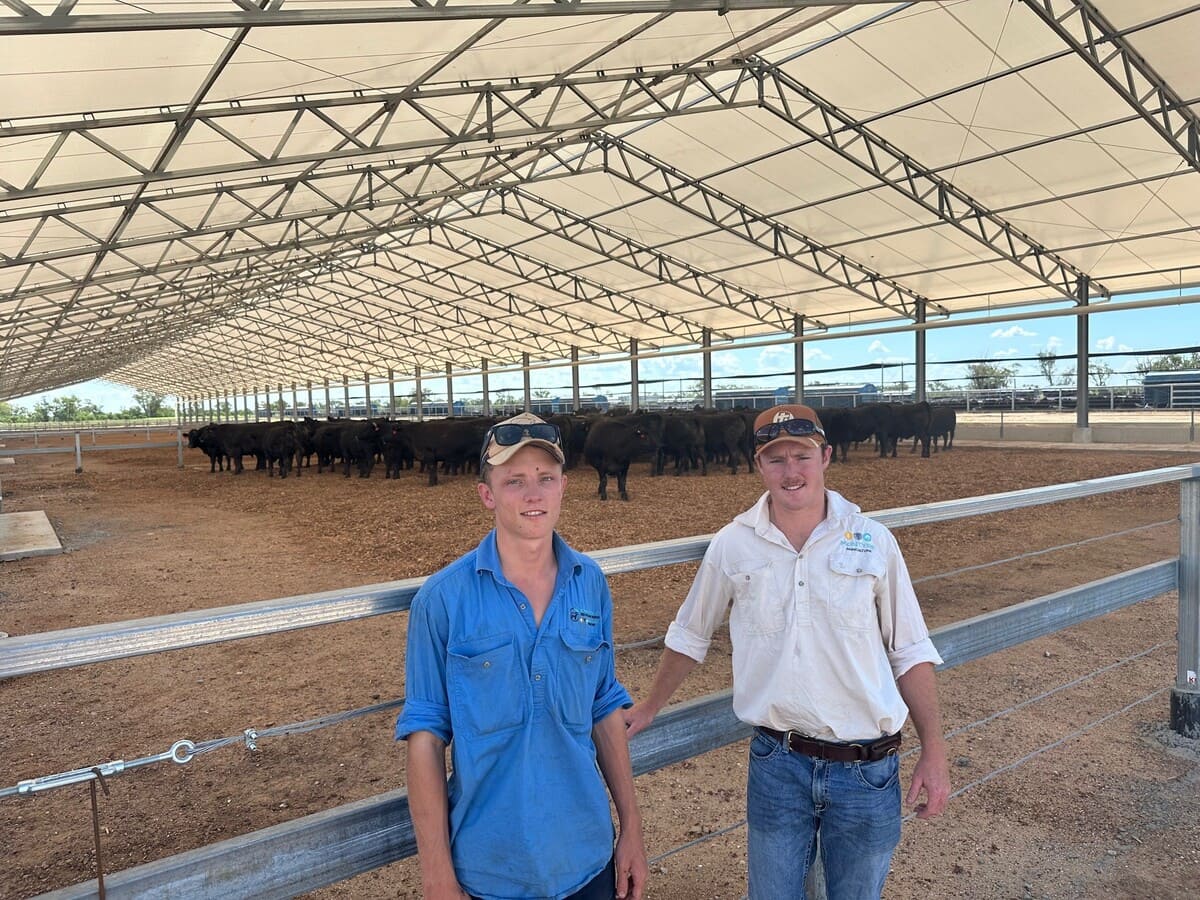
Campbell and Finlay McIntyre at the family’s new feedlot sheds at Mooramanna, St George
Growing a vibrant, diverse business with Rabobank
As long-term Rabobank clients, Hamish and Mary consider opportunities such as Rabobank’s Knowledge Tours as important opportunities to strengthen their own business.
Having grown McIntyre Agriculture into one of Queensland’s most significant, with properties across the St George, Quilpie, Rockhampton and Roma districts, Hamish and Mary credit Rabobank for underpinning their expansion.
“We’ve enjoyed wonderful growth in our business based on the support of Rabobank – of our manager Mark Middleton and QLD State Manager Polly Saraiva, plus our two previous managers along the way,” Mary says.
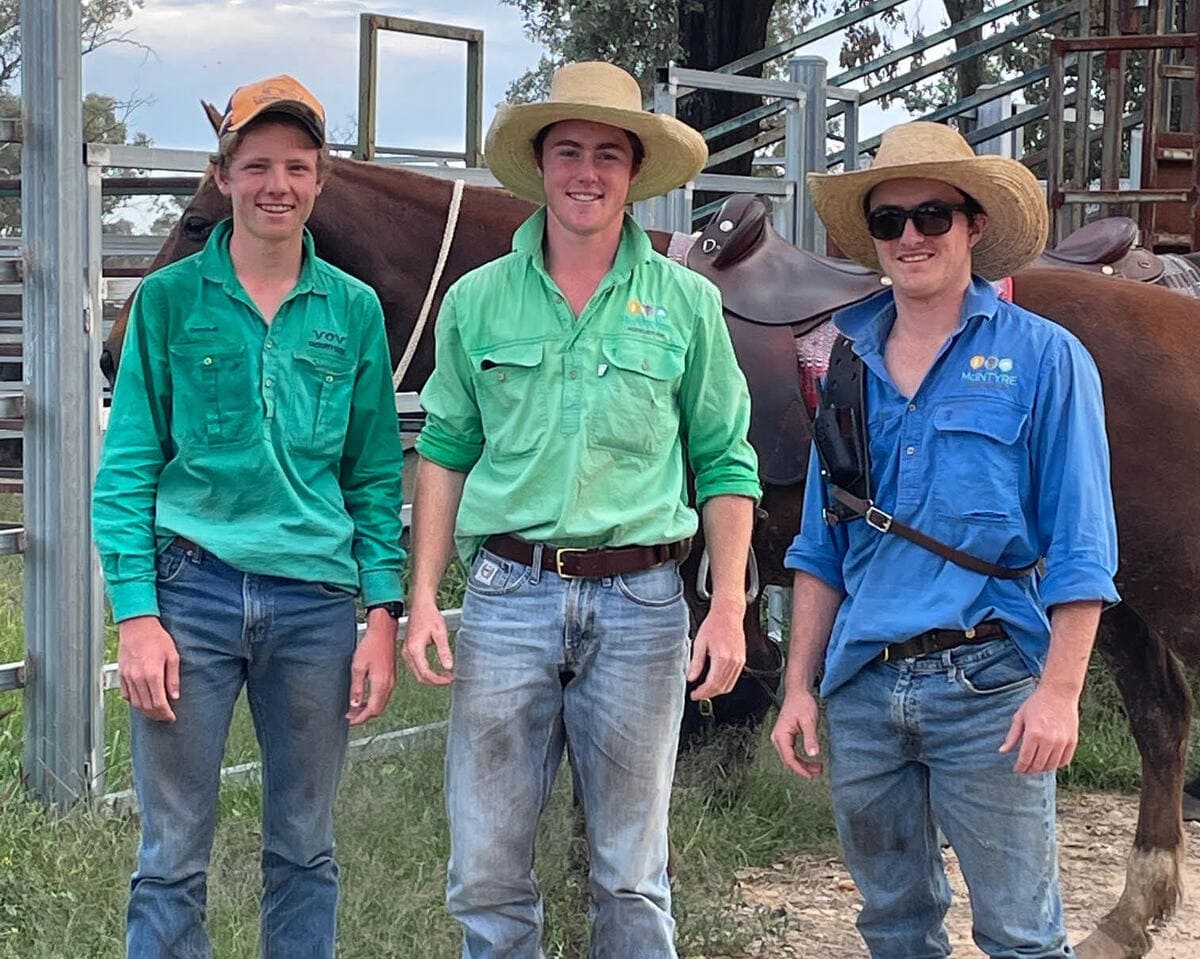
It’s a family affair, with Hamish and Mary’s three sons, Campbell, Finlay and Stirling, highly engaged in the business.
“Rabobank was willing to understand our strategy and direction, and even in the difficult times such as drought when our numbers weren’t where we hoped they’d be, if a property came up to buy Rabo supported us – and when things did turn around we were able to hit the ground running,” Hamish reflects.
“It demonstrates the bank’s long-term thinking, and the vision and belief they had in us, and what we were trying to achieve,” Mary smiles.
